Lắng Nghe Điểm Chạm is a project aiming to expand exposure opportunities and application potentials of performing arts into the life of marginalized and minority communities of Vietnam.
The initiative is created by Thân Nghiệm Club and Saigon Theaterland, and supported by the Goethe-Institut as well as HUTECH University. By its second season, the project has explored dance and movement with artists-in-training from Saigon’s Deaf and Hard-of-Hearing* community, in collaboration with hearing artists-in-training and local sign language interpreters.
Though they make up a significant segment of the Vietnamese population, the local Deaf community continues facing many systemic barriers, largely due to a lack of language-related support. A large number of deaf people in Vietnam communicate using their local Vietnamese sign languages, including three notable varieties: Hanoi Sign Language, Haiphong Sign Language, and Ho Chi Minh City Sign Language.
To them, Vietnamese sign language (VSL) is actually their mother tongue as opposed to the Vietnamese language — whose grammatical rules and vocabularies are completely different. As such, deaf people most often rely on sign languages to efficiently and accurately gain access to information. Unfortunately, outside of a special education or Deaf-led environments, spaces that commonly provide other Vietnamese people job opportunities, recreation, health assessment, and other services do not cater to their communication needs. Thus, the Deaf community is denied equal access to the same experiences compared to their hearing counterparts, not to mention the costs incurred for interpreting services due to a lack of governmental support.
Nevertheless, in a discourse that tends to generalize deaf and hard-of-hearing people, or merely discuss them within educational and medical contexts, recreational and artistic avenues created to support the Deaf community thus become noteworthy and refreshing, even if they are limited. There is Nghe bằng mắt, a project that has been fostering collaborations between deaf and hearing artists in Hanoi to create visual and film art projects for many years. Similarly, in Saigon, Lắng Nghe Điểm Chạm aims to provide people from the local Deaf community access to dance and movement arts as an alternative career, a chance for self-discovery, and a strategy to foster empathy between hearing and Deaf communities.
*Saigoneer uses the capitalized Deaf to refer to the community and culture of deaf and hard-of-hearing people.
How it began
“Ever since I studied dancing abroad 10 years ago, I’ve already been fascinated with sign languages,” Lyon Nguyễn, told Saigoneer when we visited their rehearsal last month. Lyon is a movement art educator in charge of Thân Nghiệm Club and an organizer and the key instructor for Lắng Nghe Điểm Chạm. “I recognize their similarities with dance art: between the artform’s usage of body movements to convey emotions, and sign languages’ employment of movements to communicate everyday contexts.”
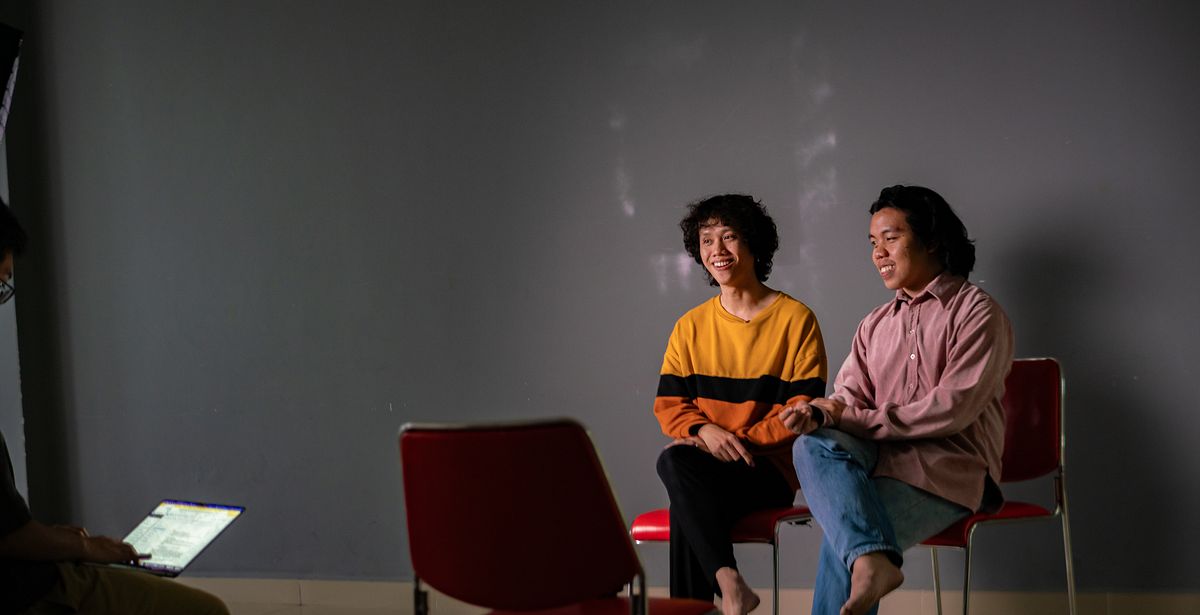
Lyon Nguyễn (left) and Phương Nguyễn (right).
Lyon eventually met Hạnh, a VSL interpreter, after he returned to Vietnam in 2023 and signed up for a sign language class. This was a serendipitous encounter for Hạnh herself, as she was trying to find a dance instructor willing to take in her deaf friend, and eventually became connected to artists like Lyon and Phương Nguyễn; the latter is in charge of Saigon Theatreland. “Via suggestions of two visiting Welsh artists, Saigon Theatreland has decided to ensure our productions are more inclusive for our audience,” Phương shared. “I was very surprised to find so many Deaf and Hard-of-Hearing people at the show, and decided to meet up with them and the interpreters.”
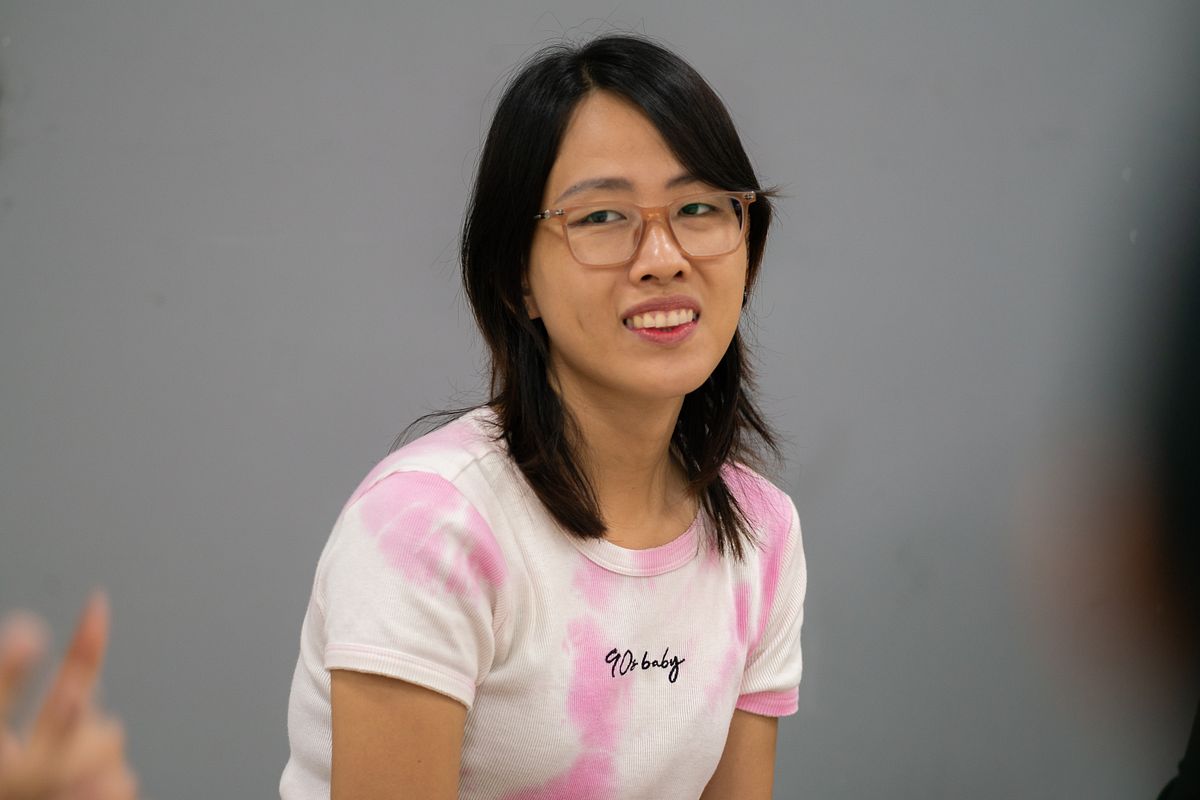
Hạnh is a VSL interpretor working with Lắng Nghe Điểm Chạm.
All artists audition for Lắng Nghe Điểm Chạm via open calls, after which eight to 10 deaf and four hearing performers are chosen. Anna Hương, one of the deaf artists rejoining the project from the first season, said: “I’ve always wanted to learn dancing with hearing people, and be integrated into their movement art field. I joined the project after learning about the art form from hearing folks and became very interested. My dream is to be a dancer, and I believe the project will show people that deaf people can do it!” Meanwhile, Chiêu Anh, one of the second season’s hearing participants and a psychology specialist, said she encountered Lắng Nghe Điểm Chạm’s notice on Facebook.
Within a span of three months, project organizers and participants host consecutive movement and sign language workshops once every week as they work towards the season's final performance, but also ensure the project’s sustainability for future seasons by equipping themselves with movement art knowledge and, more importantly, basic VSL skills.
The inclusive beauty of movement art
It might be baffling to some why deaf people would want to engage in an art form that is often associated with music. While incidental music will be composed to accompany the dances, it should be clarified that their work are better described as “movement art,” a term the project’s artists themselves use to describe their avant-garde approach to dancing, distinguishing them from more conventional iterations of the art form. Apart from the objective fact that three-month is a short run time for an art form that traditionally requires years of practicing to achieve choreographed synchronicity, movement art’s comparable approach to acting means there is less focus on following fixed beats, and more on the narrative conjured from the expressiveness and interactions of dancers’ bodies — features that go beyond the boundaries of spoken languages among all people, but those deaf people especially have resonance with and excel at.
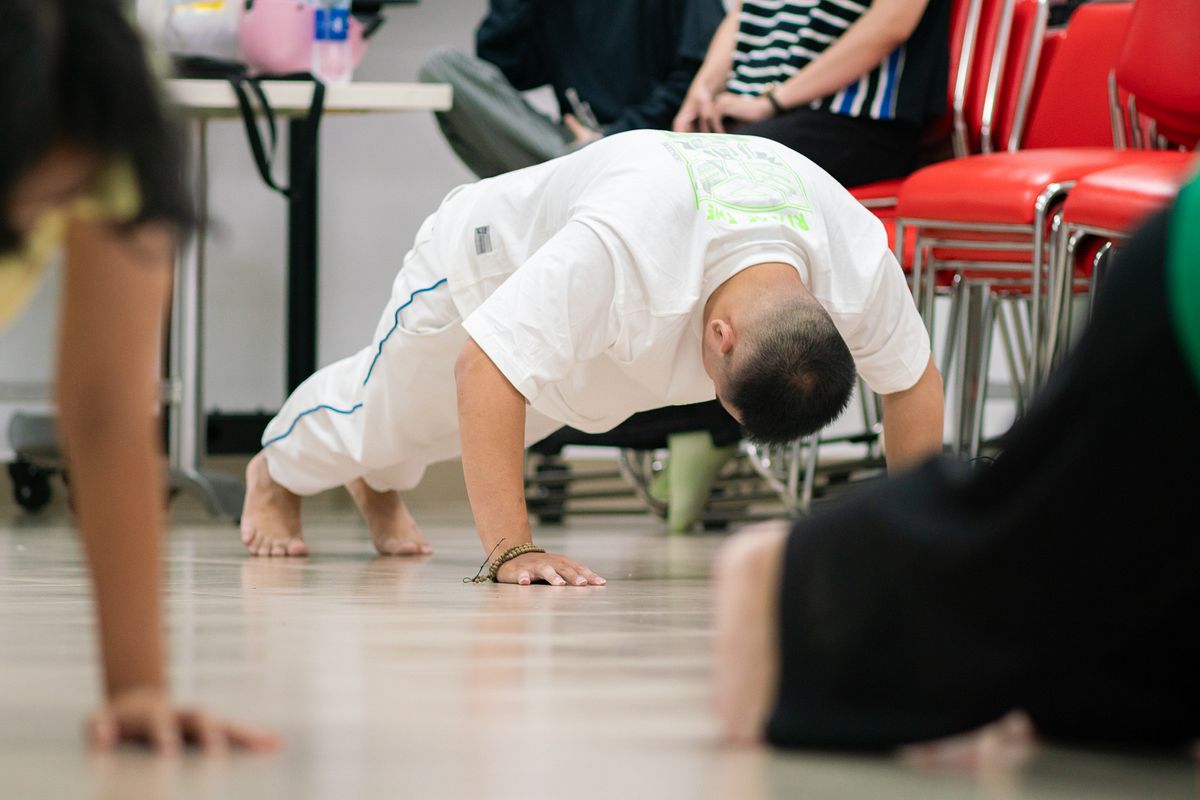
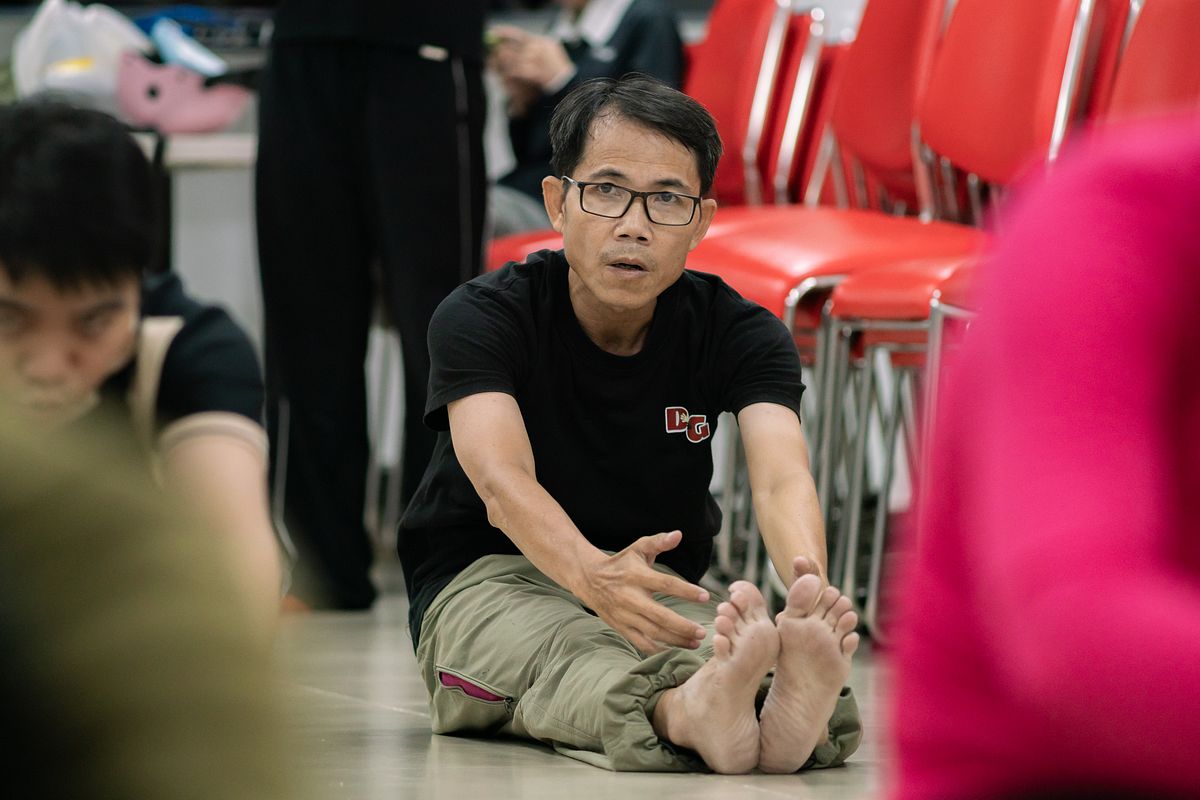
Proper stretches are essential to any physical practice.
After a long warm-up session that stretches the participants’ movement potentials, with the assistance of interpreters, Lyon and his co-instructors workshop the movements that hearing and deaf participants have co-created within various groups: a practice called “contact improvisation.” “We move to understand our own bodies, but also to interact with others and understand the intersections that arise out of it,” Chiêu Anh explained. “Such intersections don’t have the language of speech, but they have that of bodies, of contact points, and their pressures. We learn to understand each other in such ways.”
In a group, they initially explore writing their own names using various body parts and upon various surfaces: one could be tracing their name’s letters in mid-air using their left elbow, or the tip of their right foot upon the floor. The contact part eventually comes in when, for instance, one dancer uses a body part of their partner to write their own name: they could be tracing out the letters while lightly supporting their partner’s head as if it were a pen. The choreography is thus built up gradually, whereby movements are experimented with to create poetic tensions, and their meanings are organically discovered along the way. There are also breaks between sessions for performers to mingle and chat with each other, with hearing performers learning to communicate with their accented sign language, before the workshop ends with some reflections.
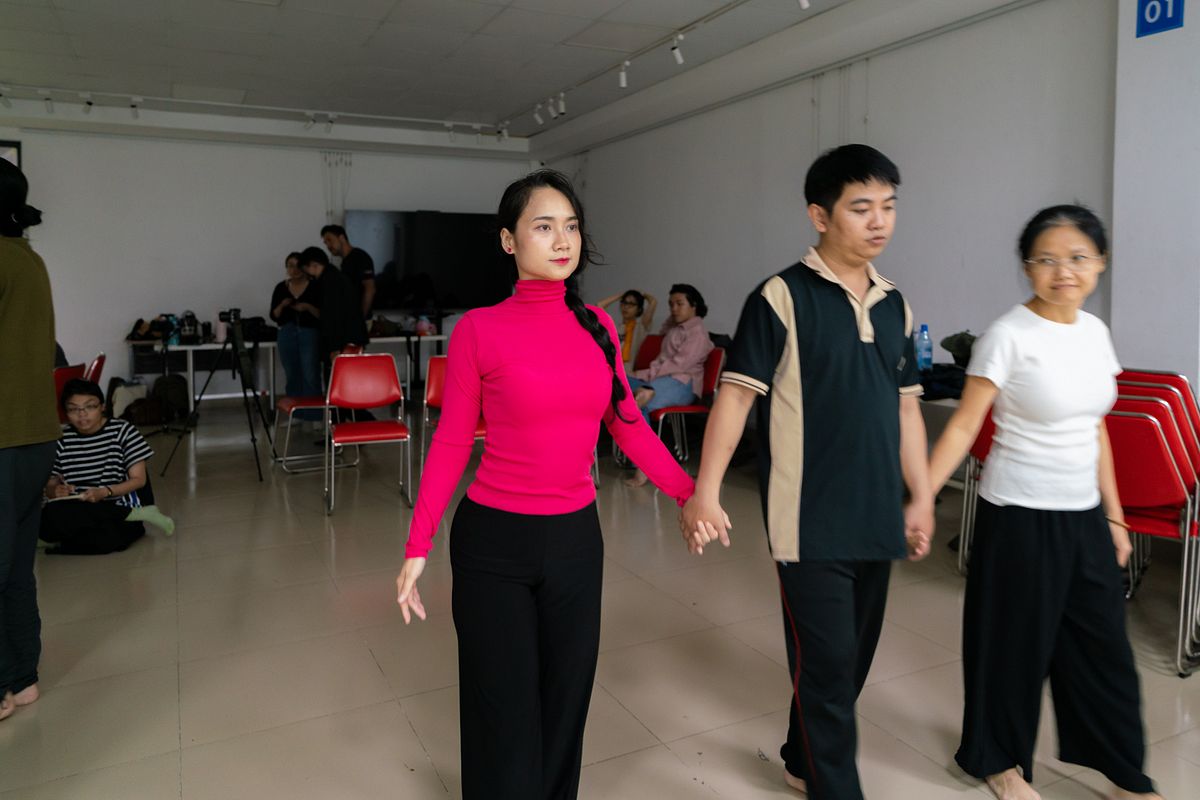
Anna (left), Hiếu (middle) and Chiêu Anh (right) have all discovered the project via different channels.
For the deaf participants, movement art’s devising process opens up both their own artistic potentials and discoveries into their own emotions and mental health. “Regular dancing doesn’t allow me to understand my feelings, nor the internal struggles that I don’t know how to heal,” Anna shared, “yet once I learnt of this movement art, I feel it can help me thrive, healing the wounds within me, and believe that I can do more things, while also accepting my own flaws.” In fact, this is what sets Lắng Nghe Điểm Chạm’s second season apart from its predecessor: the project’s deaf dancers are diving deeper within themselves, harvesting their own lived experiences and Deaf culture, like sign language, to craft stories which are distinctly theirs, while still enabling the audience to connect with them, due to the rich displays of their emotional life.
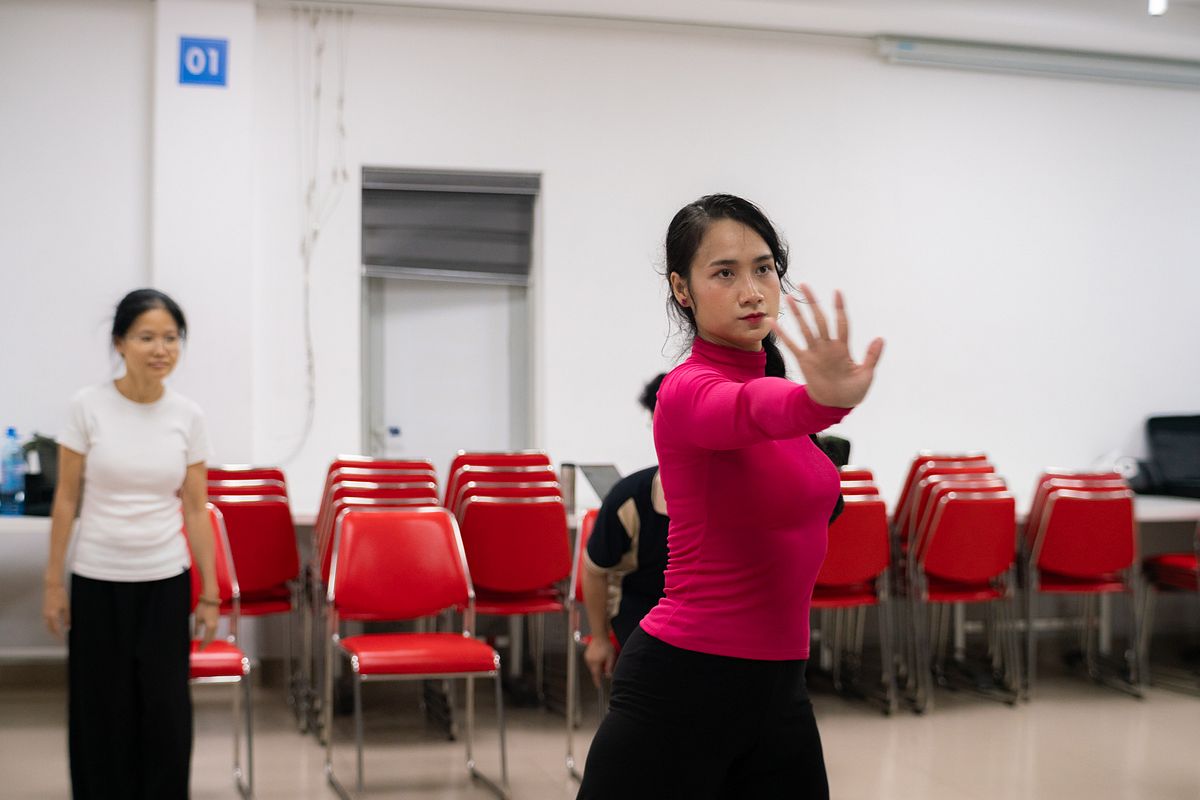
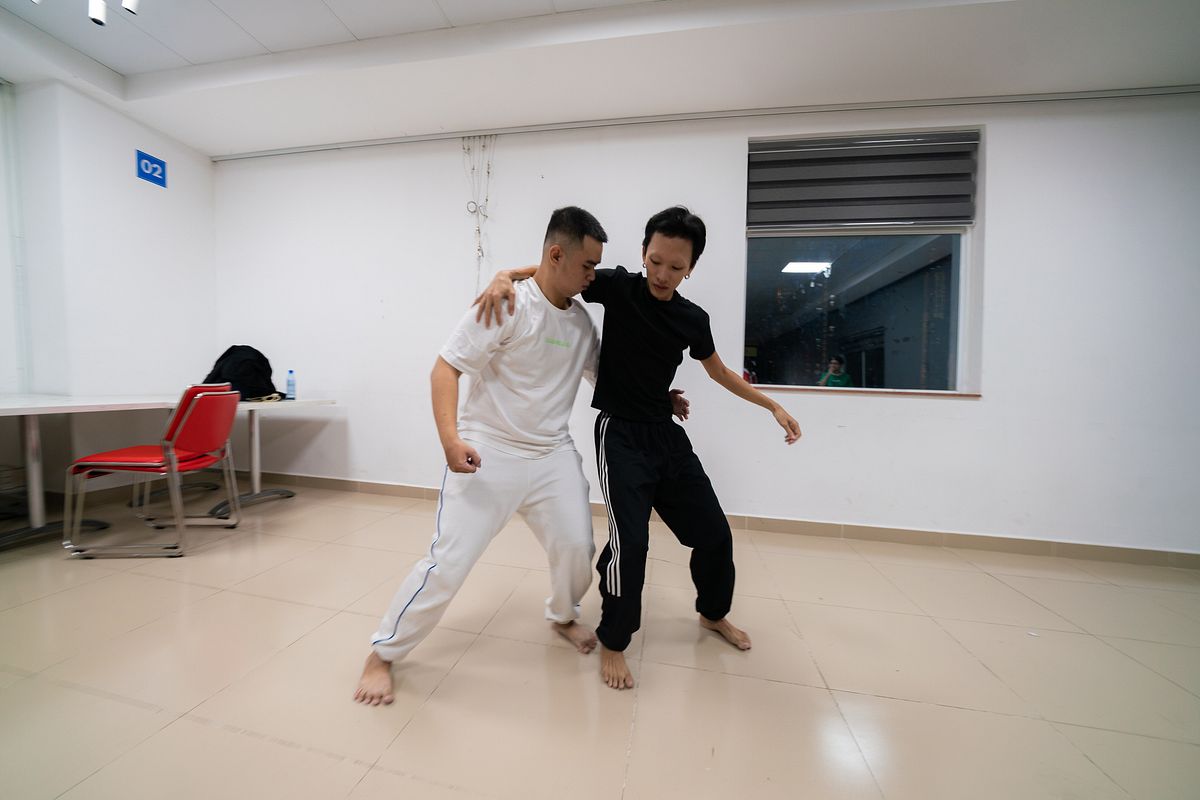
Movement art’s devising process opens up participants' own artistic potentials.
“The art form enables all kinds of bodies to participate,” Lyon shared. “Everyone can approach the art form, no matter their disability, condition, gender, or skin color. As compared to hearing dancers, I find deaf participants to be especially attuned to their movements, and senses of sight and touch.” Phương also added: “I believe all bodies are equal: no body is more suitable to practice art than another. Sometimes, as with hearing people, our verbal abilities enable us to communicate fast, yet we thus forget that we also have our body language as another miraculous form of communication.”
Overcoming communication barriers with Vietnamese sign language
Supplementary to each movement art workshop is a session of VSL, hosted one day after, aiming to foster community and bridge communication and cultural gaps between deaf and hearing artists so they can better collaborate during the movement art rehearsals.
Typically, participants will first revise the last sessions’ vocabularies and practice finger-spelling among themselves, before the sign language instructors, with the assistance of interpreting volunteers, introduce them to some warm-up games, and new sign language topical vocabularies and grammatical constructions.
As participants engage in these activities, as well as practicing signing in pairs and with the class, they also get to hone their language use, including communication etiquette such as voicing-off during signing, or using appropriate eye contact and facial expressions. “Currently, hearing participants may be shy at communicating in sign language with their deaf peers, while the deaf participants are more confident,” Hạnh shared her observations as the main interpreter. “Nonetheless, I can see that their relationships are getting better: proactive communication is very important.”
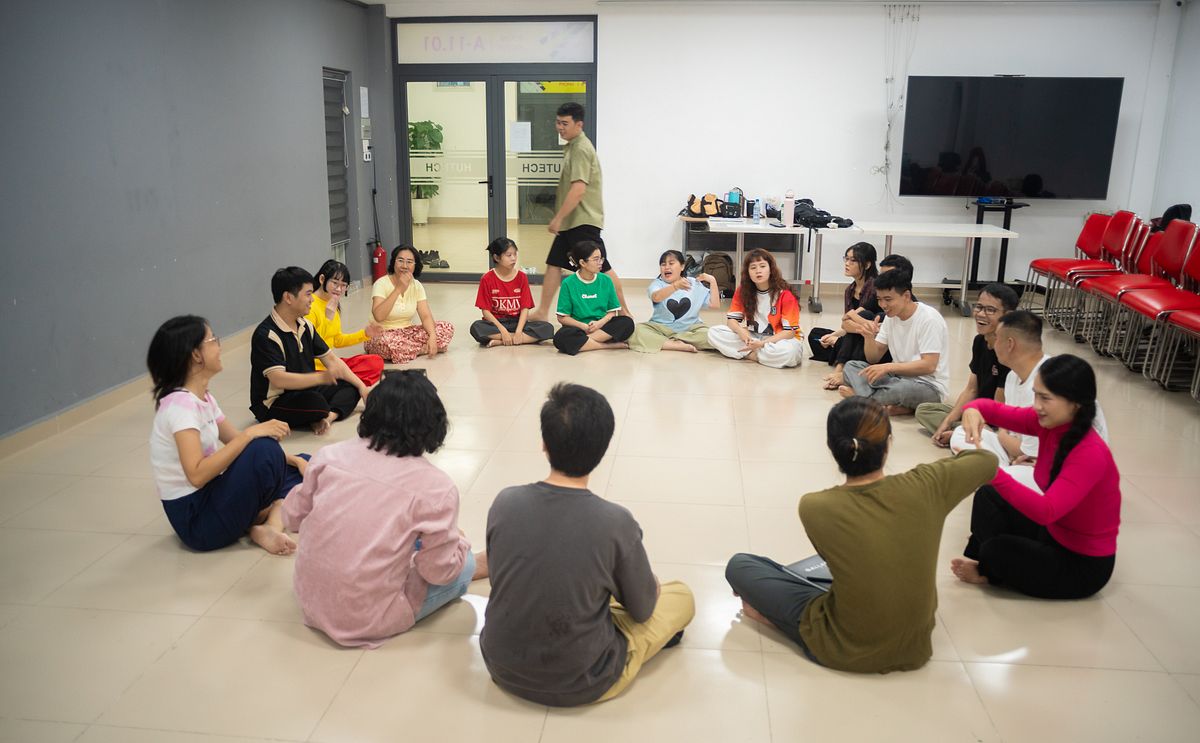
Brushing up on communication skills, especially VSL, is important to the group.
Nevertheless, sign language interpreters remain incredibly necessary for the working process. Hạnh elaborated on her role, being the one explaining dance terminologies or instructors’ actions to deaf dancers so they can understand the intentions behind those movements, as well as directing deaf participants’ queries to their hearing instructors. “I feel that a number of hearing people tend to believe that ‘you only need to use gestures to communicate with deaf people, no need to have an interpreter who’d make things cumbersome,’” Hạnh discussed some misconceptions surrounding her role. “However, a sign language interpreter remains a crucial bridge for knowledge to be transmitted clearly and accurately to the Deaf community, in all fields that they want to take part in.”
Moving forward
“Lắng Nghe Điểm Chạm has brought to the forefront the awareness that there are many communities around us,” Chiêu Anh shared, with regards to the importance of inter-community and disability awareness. She added: “We need to think: how can we live with each other? Can we grow together? How can we interact with each other?”
Undoubtedly, no one desires to improve the public’s understanding of the Deaf as much as those within the community themselves. “I feel that currently, deaf people are facing a lot of hardships, and I hope models like Lắng Nghe Điểm Chạm can be duplicated, and receive systematic governmental support, or support from influential organisations, so that more opportunities are created for Deaf people,” Hiếu, a dancer from the Deaf community, shared.
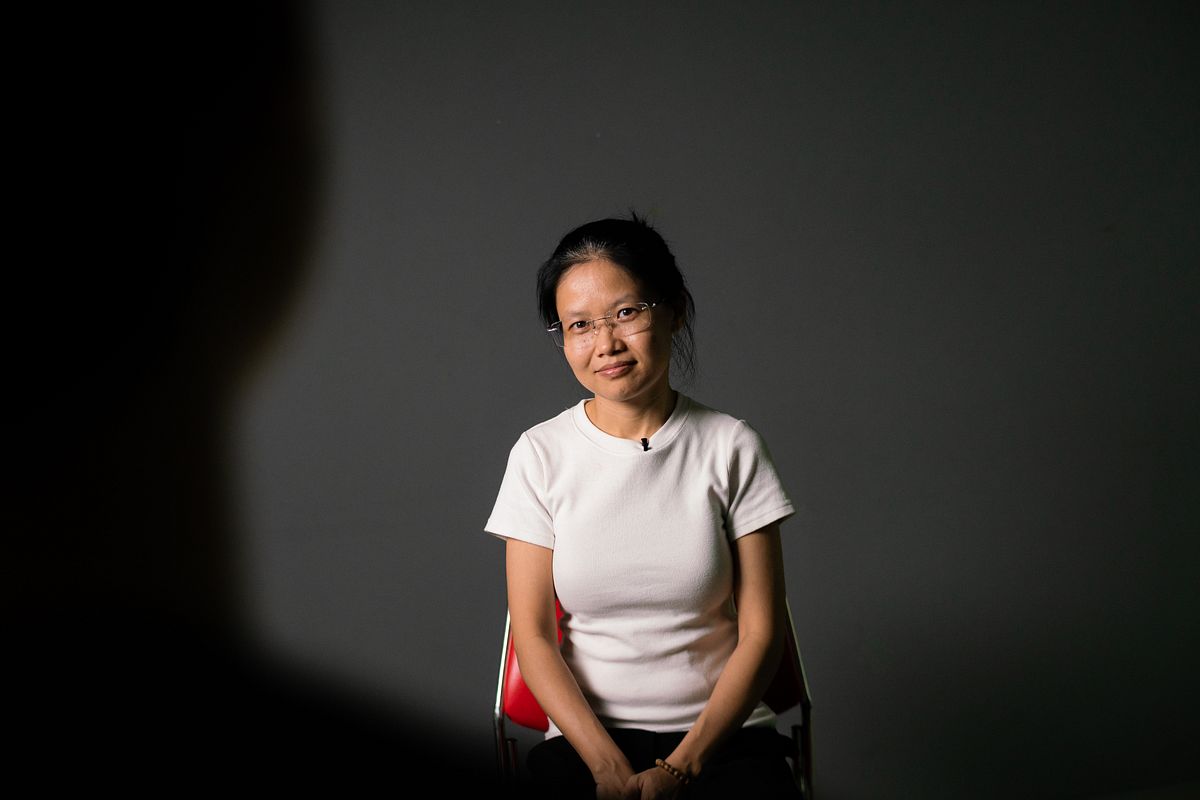
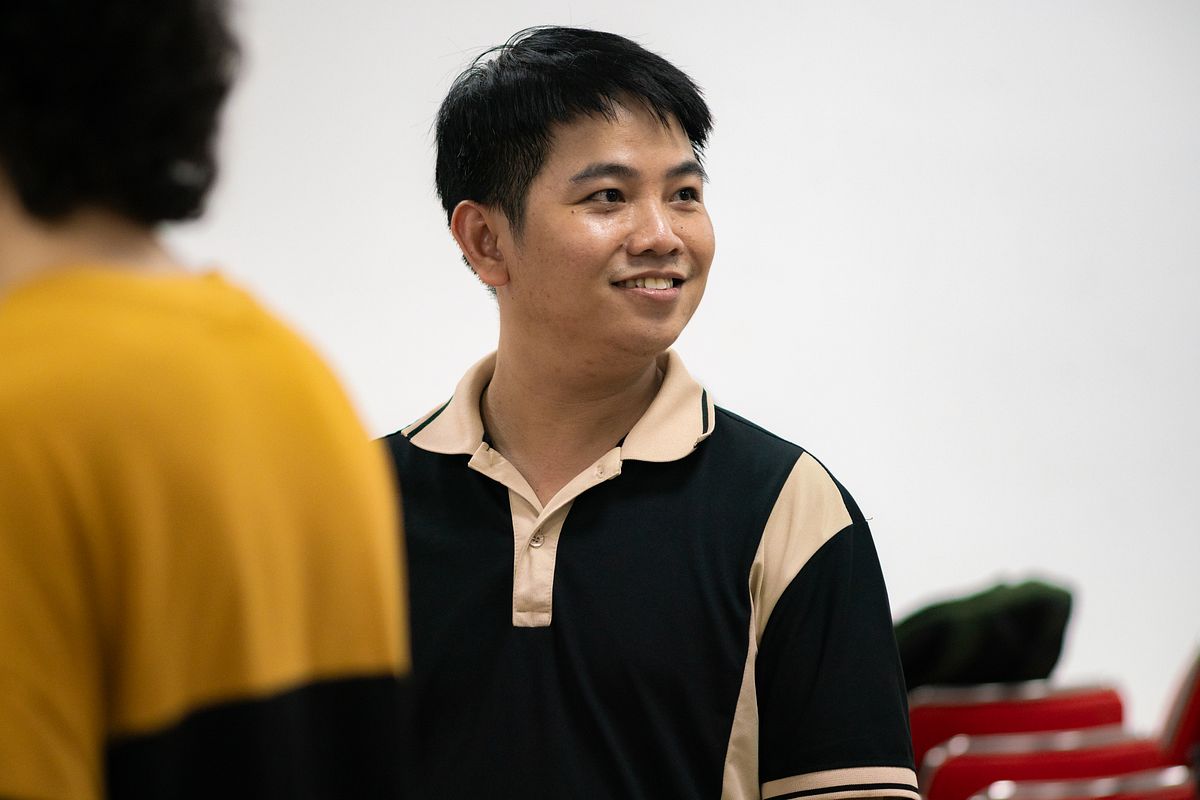
Chiêu Anh (left) and Hiếu (right).
Anna corroborated on the importance for solidarity between both communities — including between deaf people and their own hearing parents within a family — so as to stop discrimination, and work towards true fairness and equality. “I want hearing people to take the extra step to understand the culture of Deaf people, and can communicate with us,” she said. “That’s why I want them to learn sign language: only by understanding clearly can one respect our culture, and thus can support the Deaf community.”
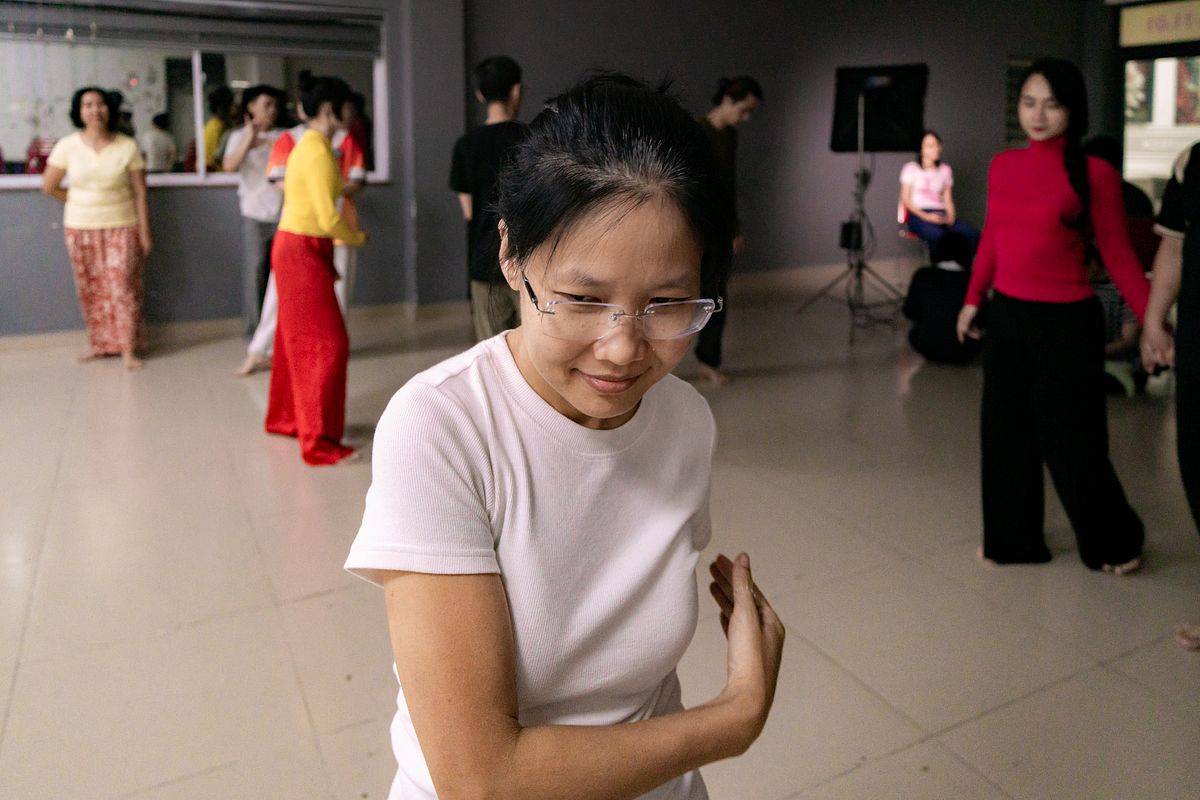
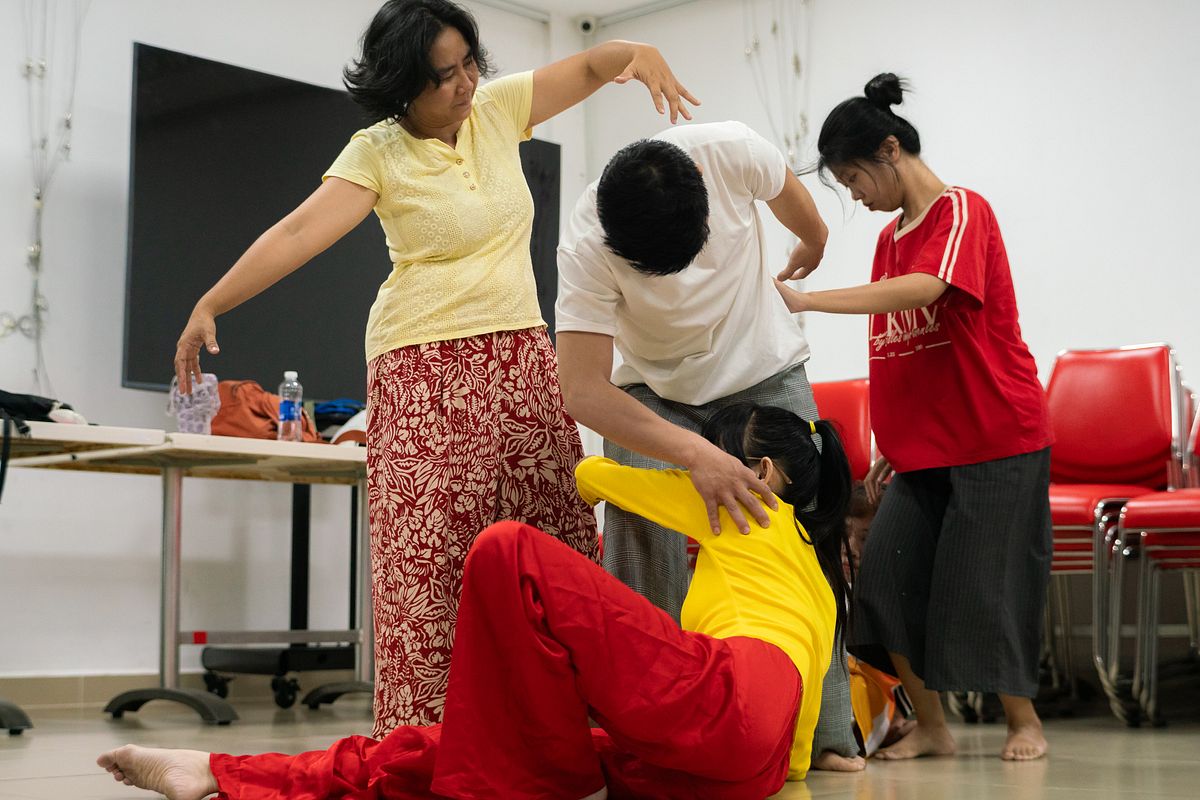

The project is hoped to be a visible testament to the possibility for communities to work together, make friends, and respect each other’s cultures.
As an organizer, Phương hoped that the project will be a visible testament to the possibility for communities to work together, make friends, and respect each other’s cultures. “I hope we can be motivated to find ways of diversifying our own understanding and experiences,” Phương expressed his gratitude towards the deaf participants, “rather than being comfortable within our own privileges, thus forgetting others’ existence, or pitying them.”
Because the wider public often assumes deaf people are not artistically inclined, Anna and Hiếu and other deaf dancers within the project look forward to be new positive representations of the Deaf community, dispelling stereotypes and inspiring other deaf people, as the project is being publicised across Vietnam on various mass media channels.
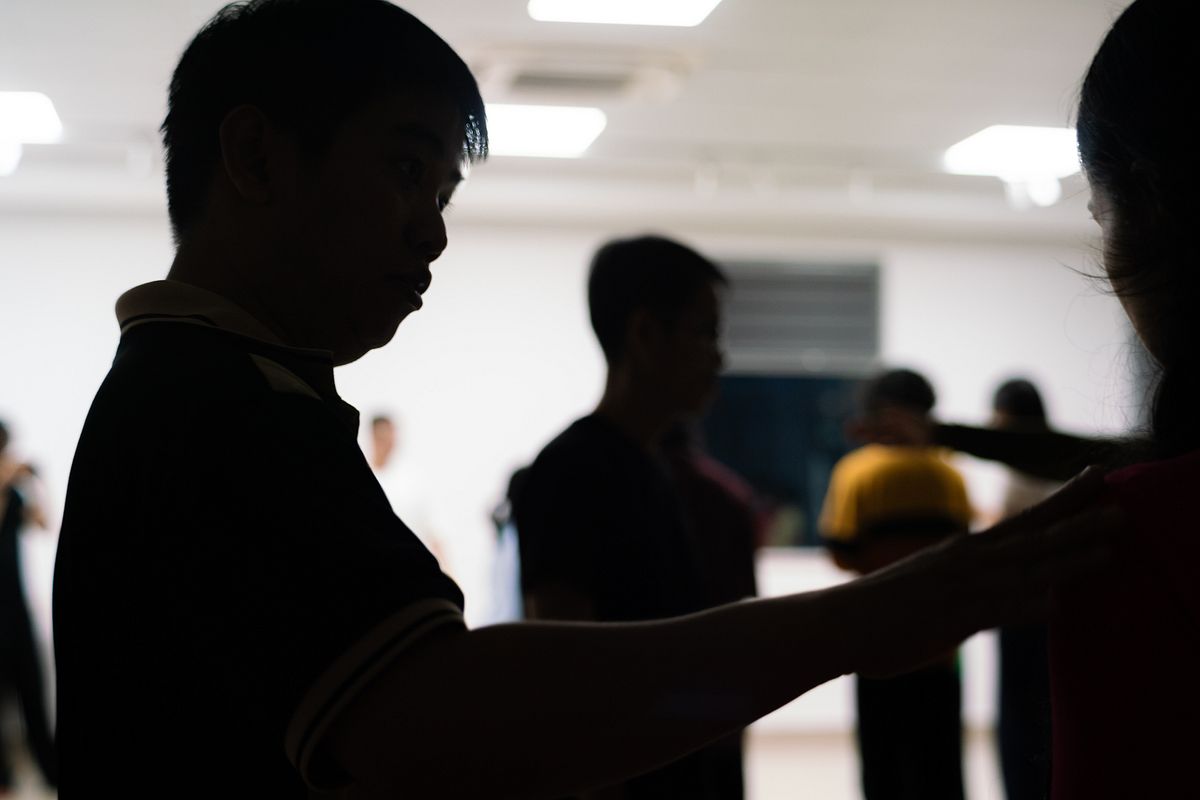
Anna and Hiếu and other deaf dancers within the project look forward to be new positive representations of the Deaf community.
In many situations in Vietnam, disabilities continue to be viewed through the patronizing lens of the medical model, and such conditions are seen merely as deficits in need of fixing, but projects like Lắng Nghe Điểm Chạm can present the social model of disability as a healthier alternative. Specifically, the disadvantages faced by people with disabilities should be attributed to the society’s unwillingness to accommodate them, as opposed to shortcomings that are beyond their control, so systematic societal changes become crucial to ensure their equal participation and access.
As such, hopefully in the near future, more communities of people with disabilities and allies will proactively collaborate with each other to create inclusive performing arts, while also equipping themselves with more knowledge to create projects that not only authentically tell their stories but also curate valuable spaces for them to explore, self-advocate, and thrive.















